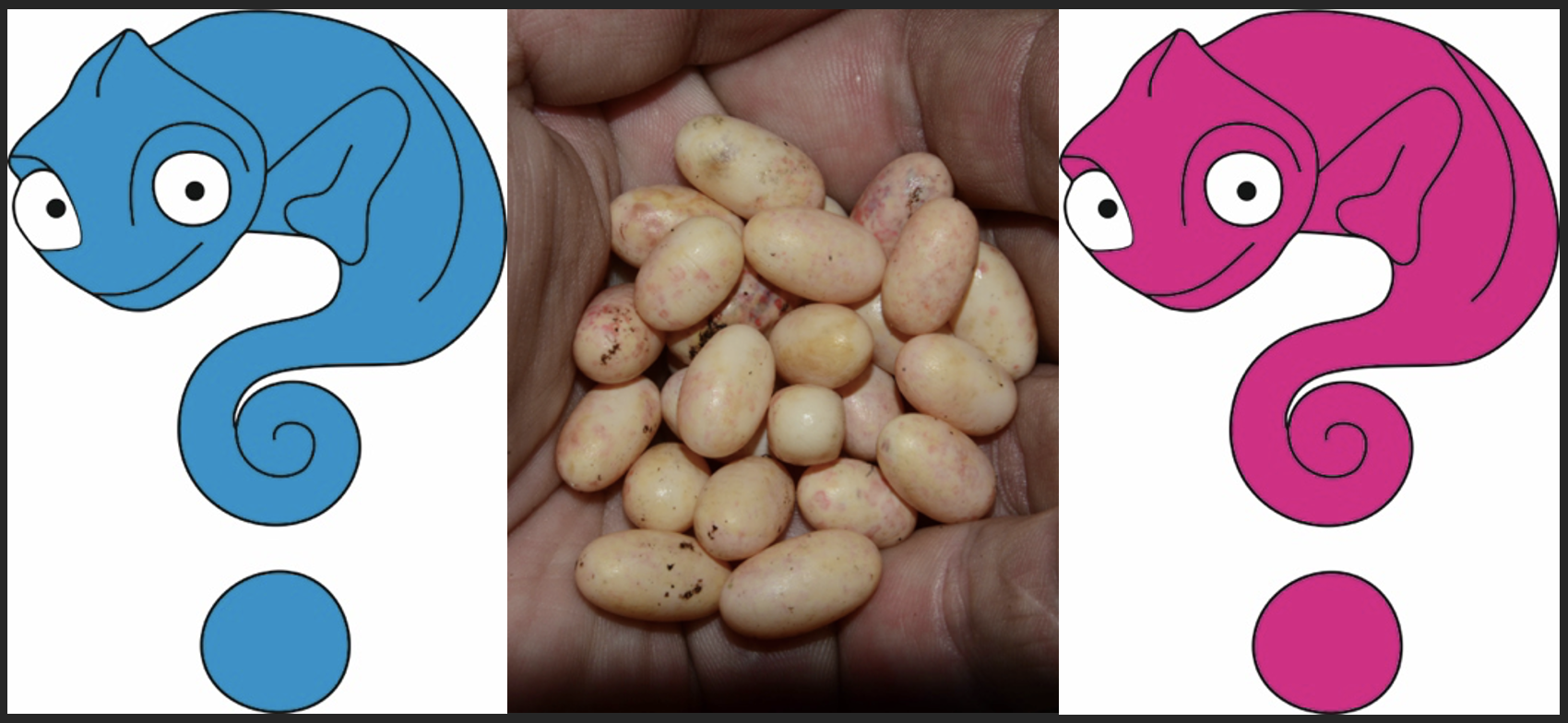Myth 5: “Females Lay Eggs Like Chickens No Matter What”

Why This Misconception Harms, Exhausts, and Shortens Lives
The belief that female chameleons lay eggs automatically—regardless of conditions—is biologically false and dangerously misleading. Unlike poultry, chameleons are not programmed for indiscriminate reproduction. Their clutch size and frequency are highly responsive to environmental parameters, especially temperature and feeding. When these are mismanaged, females produce oversized, infertile clutches that drain their calcium reserves, damage their organs, and shorten their lifespan.
Reproductive Regulation Is Real
Scientific data, including the study on Chamaeleo calyptratus linked here, confirms that:
Lower temperatures reduce reproductive stimulation.
Moderate feeding limits clutch size.
Controlled photoperiods and seasonal cues further regulate reproductive cycles.
This means that keepers can and must intervene. By adjusting husbandry conditions, they can prevent unnecessary egg-laying and protect the female's health.
The Cost of Overproduction
When females are kept too warm and overfed, their bodies respond with excessive egg production—even without mating. These clutches are:
Infertile and biologically pointless.
Large, often exceeding natural capacity.
Calcium-draining, leading to metabolic bone disease.
Physiologically exhausting, shortening lifespan and increasing mortality.
This is not "natural"—it's a pathological response to artificial conditions.
The Correct Protocol
To prevent reproductive burnout:
Reduce ambient temperatures to mimic cooler seasonal periods.
Feed moderately, avoiding high-fat or high-protein excess.
Monitor clutch intervals and adjust care accordingly.
With proper regulation, females can live longer, healthier lives without the burden of constant egg-laying. This is not just husbandry—it's ethical stewardship.